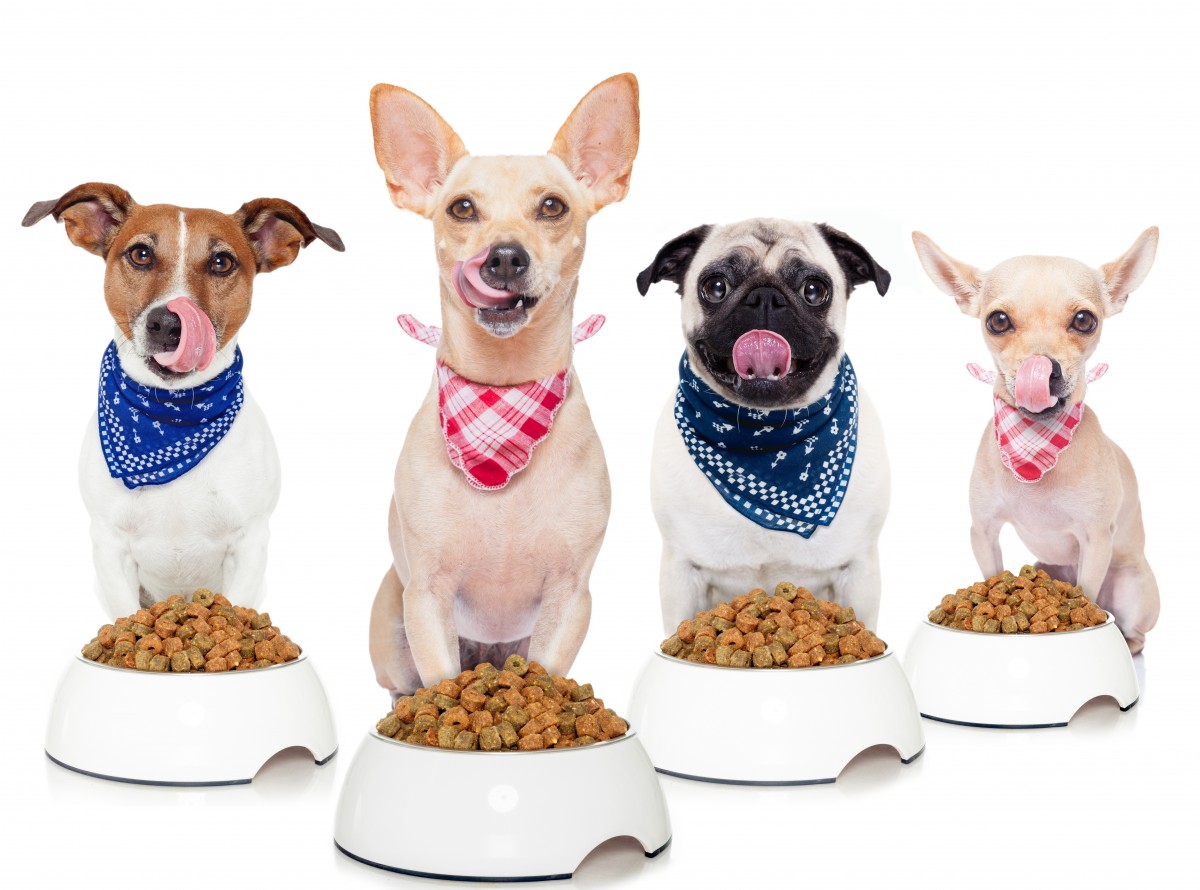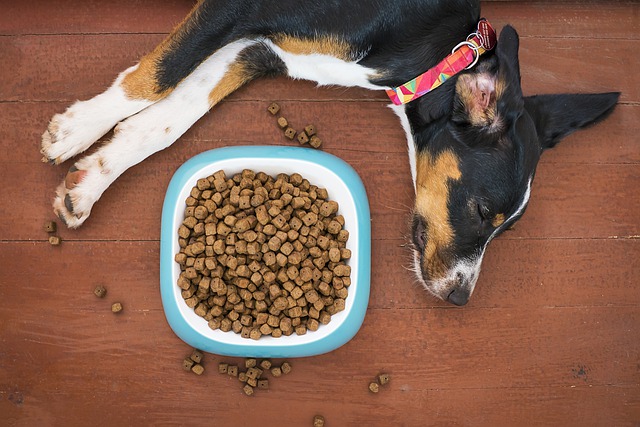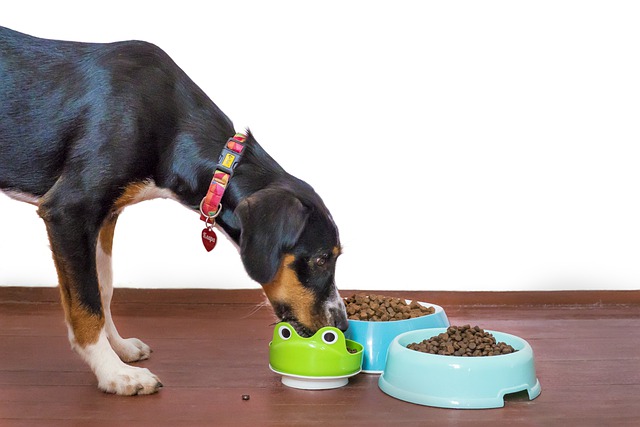
Dog food is not just a matter of choosing among the countless commercial proposals. The right food for your pet requires a good knowledge of its needs and specificities. Typically, you can select between kibble and homemade food. In this post, we will focus on the weaknesses of kibbles.
Whatever the origin or quality, all types of kibbles have 5 significant shortcomings.
1. Friability
The friability of kibbles is a real problem:
– Because of how they are made, kibbles break down into powder when chewed.
– This powder sticks, thanks to the mucus, to the roots of the dog’s teeth, forming dental plaque.
An abrasive effect of the kibble is sometimes put forward, which would produce an anti-tartar effect. However, no study has proven this, and the opposite is observed: 4 out of 5 dogs are fed with kibbles, and 80 to 85% of them suffer from dental plaque after 3 years old. Moreover, moistening them has the same result (mash).
2. Dehydration

Since kibble is a dehydrated product, it will immediately tend to absorb the dog’s internal fluids, which will, in turn, dehydrate him. For this reason, you must always keep water nearby your dog’s bowl. Despite this:
– Dehydration of the dog may cause extra work for the renal system, which is explicitly designed for urine retention, for which the diet should be the primary source of hydration.
– Water, if not required by physical activity or heat, will strain the kidneys to:
◦ work unnecessarily;
◦ store too much (inflammation)…
3. Dietary balance
Additions or the presence of vitamins A, C, and D, advanced as a nutritional argument, are likely to lead to pathologies (renal, cardiac, bone, muscle, etc.). Indeed, dogs synthesize it for vitamin C, unlike humans who need it daily. He, therefore, has no daily need for it. It’s the same thing for vitamins A and D, which can cause hypervitaminosis (liver, bones, hair, skin, eyesight, etc.).
4. Feces
Dog droppings should be between 10 and 15% of the weight of food ingested. In a study conducted by a dog behaviorist, all brands and qualities of kibble combined measured weight of excrement between 30 and 50% of that ingested. This significant and abnormal difference is symptomatic:
– on the one hand, a poor diet of the dog;
– on the other hand, overwork of the organs for nothing.
5. Diarrhea
The cause is quite mysterious. It is almost systematic that a sudden change of kibble brand leads to diarrhea. However, this effect is never observed in a dog fed with natural and raw food, which can be switched from one to the other without any prior transition. Therefore, this observation would be a sign of a fragility that sets in and of an abnormal functioning of the organs, which goes against all the principles of animal evolution (adaptation).
Please note: kibble nutrition is insidious because the effects are rarely felt quickly, but gradually, until they lead to an acute, chronic, or fatal pathology; in this respect, the studies that claim the benefits of kibble are often very partial, always giving rise to strong criticism of their protocols or conclusions.
What are the tips for feeding your dog correctly?

Here are some tips on how to feed your dog the right food.
Adapted dog food is based on:
– Meat: all types of meat (farmed or game) and all cuts are suitable for the dog, as long as they are given raw, cut into cubes or strips to be swallowed whole, without chewing. Never give ground or mixed meat to a dog.
– Vegetables: many vegetables are suitable for dogs, even when in season. They are given raw or only blanched, mixed, or grated. They are essential in providing the dog with natural vitamins and minerals and ensuring good hydration (renal system).
– Cereals: rice and only cooked rice. It is not essential, but rice is the cereal with the highest protein content. It is also the best assimilated by dogs (except for gluten allergies).
– Hardbodies: bones, but also cartilage, raw only. Bones must be adapted to the size of the dog’s mouth to be easily crushed and ingested. They must also have enough meat to be safe (fleshy bones). They should be given after the bowl to clean the mouth and avoid the formation of dental plaque.
Considering this list of ingredients, how much does it cost to feed your dog this way? A study shows that it is possible to provide commercially available products to a 40 kg dog, who eats almost 1 kg per day, for less than $40 per month.
Good to know: eggs, vegetable oil, fish, fruits, peelings can also be used without inconvenience.
The trick of freezing
The great advantage of the freezing process is that it retains all the natural properties of the food, including hydration. More importantly, there is no need to thaw portions to feed the dog:
– Virtually any food given frozen to the dog will become a rigid body that, instead of crumbling and sticking to the gums (forming dental plaque), will naturally clean it.
– Indeed, the dog does not have the sense of cold at the level of its papillae.
Here are some tips on how to use freezing in your dog’s diet:
– Precaution concerning vegetables: to freeze vegetables, it is generally necessary to blanch them beforehand by plunging them 3 to 4 minutes in boiling water, then by rinsing them in icy water. Before that, it is essential to wash them well (to eliminate microbes), but it is not necessary to peel them most of the time.
– Make dumplings: you can then mix your ingredients (meat, vegetables, rice, fish, peelings, etc.), then make dumplings and put them on a plate (to avoid sticking). Once frozen, please put them in a freezer bag and take them out as needed.
– Make sticks: whole vegetables or just cut to the size of the dog’s mouth, blanched and frozen, will be perfect “bones” that he will be happy to grind. But also:
◦ Whole, non-gutted fish of the right size, given frozen to your dog, will no longer risk hurting him, as the bones become brittle with freezing.
◦ Diced meat or shreds of the right size and frozen will particularly appreciate hard bodies.
– Bones and cartilage: of course, bones and cartilage, such as from the tail or ears of pigs, wings, and chicken carcasses, will be able to be stored in the freezer and given directly. These less noble parts are also more economical.
Hope you’ve found this post helpful and enjoyable. Feel free to share your thoughts in the comments below.






